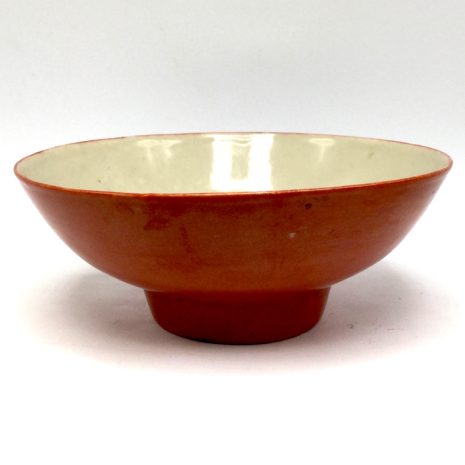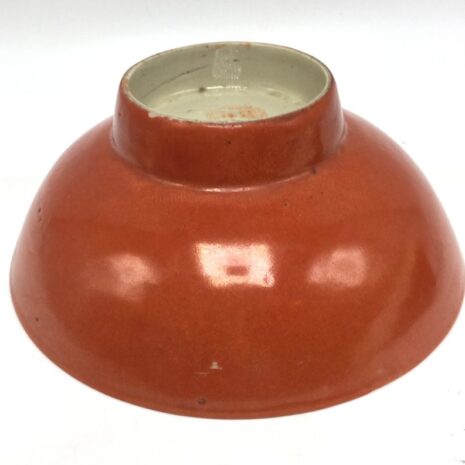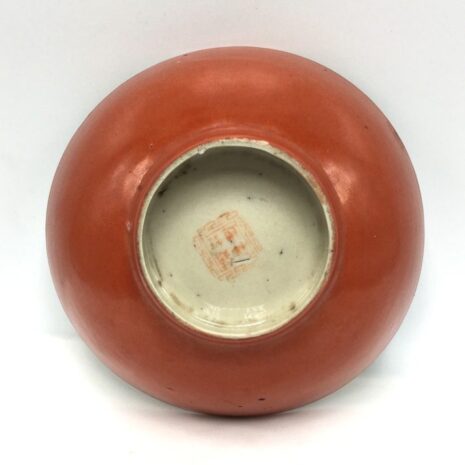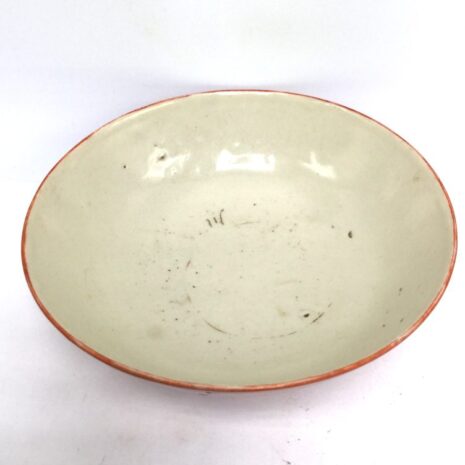Antique Red Porcelain Bowl w/ High Foot, China (18043)
Original price was: $135.00.$110.00Current price is: $110.00.
H: 2.5” Dia: 5.75” | FREE SHIPPING WITHIN CONTINENTAL U.S.
Beautifully shaped footed porcelain bowl, thinly crafted with a coral saffron glaze on the outside on a deep foot. Fading red stamped seal of an unknown kiln on bottom. Likely from the Tongzhi Period 1862-1874.
Description
Although the Chinese had been making a red glaze since the Song Dynasty, Qing dynasty potters developed new interesting glazes. During the Tongzhi Period potters developed a very popular high-fired coral red glaze with orange tones, which is when this bowl was made.
This simple and beautifully thin-shaped porcelain bowl has a monotone coral saffron glaze on the outside and a greyish-white glaze on the inside. It sits elegantly on a deep foot. The bottom has a fading early 20th century stamp of an unknown kiln. There are circular marks from kiln and some minor pitting inside the bowl, which is in excellent condition.
Additional information
| Place of Origin | China |
|---|---|
| Period | Antique, Qing Dynasty |
| Date | Tongzhi Period (1862-1874) |
| Materials and Technique | Porcelain |
| Dimensions (inches) | Ht: 2.5” Dia: 5.75" |
| Dimensions (metric) | Ht: 6.35cm Dia: 14.61cm |
| Weight | 7 oz |
| Condition | Excellent, fine patina demonstrating age and use |
| Item Number | 18043WAR |
| Shipping Box Size | |
| Width | 0” to 5.9” |








